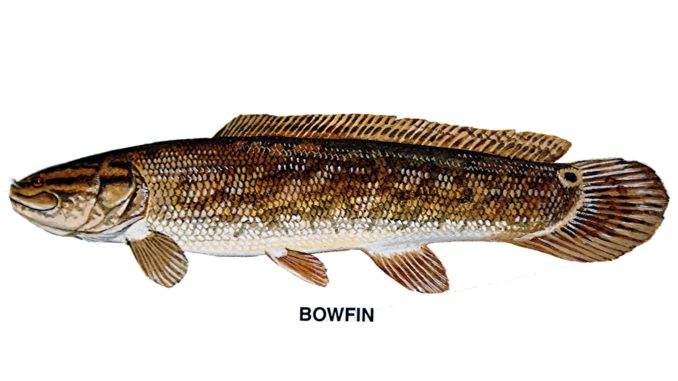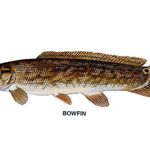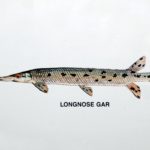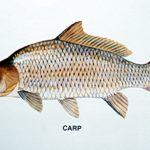
State regulations pertaining to bowfishing prohibit the taking of any freshwater gamefish. Certain non-game species, typically referred to as “trash fish”, are the quarry of the bowfishing public. Three species dominate the creels of bowfishermen. Biologist Scott Lamprecht, who oversees the fisheries on the Santee Cooper lakes and the Cooper River for the SCDNR, provides some insight into the lifestyles of these swimming bowfish targets.
Bowfin, more commonly referred to as a mudfish, are native to South Carolina waters and sometimes mistaken for the fish at the top of “America’s Most Unwanted” list, the snakehead.
“Bowfins do well in still, poor water quality areas with low oxygen,” Lamprecht said. “They are carnivorous fish that eat just about any small live creature they can get a hold of: primarily fish, frogs, crustaceans and insects. They spawn from March until early June, then the male guards the fry until they are old enough to make it on their own.”
Bowfin are an ancient, almost prehistoric-looking fish whose shape moves from body to tail with little pause. Like most fish, female bowfins grow larger than males. The male can be distinguished by a dark ocellated spot near the tail.
Longnose gar are found in nearly every body of water in South Carolina, with the exception of mountain lakes. It is the only gar species native to South Carolina, with a slight overlap in the Savannah River of spotted gar.
“Spawning gar are often seen in the spring and early summer, consisting of one large female on the surface being tended by several smaller males,” Lamprecht said. “Longnose gar are a long-lived species, living up to 20 years. The Santee Cooper lakes contain a number of large specimens that are holdovers from days when the lakes were filled with hydrilla and gar flourished in the over-abundant vegetation.”
A native species, common carp can be distinguished from grass carp — a non-native species stocked by the SCDNR as a low-level vegetation control measure — by both it’s size, coloration and dorsal fin.
“Grass carp grow to tremendous size, often growing 16 inches in a year, and may weigh over 50 pounds,” Lamprecht said. “Common carp are rarely larger than 20 pounds, have a reddish-gold coloration, and sport a long dorsal fin that runs down it’s back. Grass carp are more cylindrical in shape, have a silver tone, and a short dorsal fin.”
It is illegal to shoot a grass carp.
The SCDNR maintains records for bowfishing kills on these three species.
Species Weight Place Year Bowfisherman
Bowfin 15-7 Santee Cooper 1994 Jimmie Wright
Carp 58-0 Lake Murray 2000 Kenneth O. Shealy
Longnose 25-6 Lake Murray 2008 John Williamson
Gar








Be the first to comment